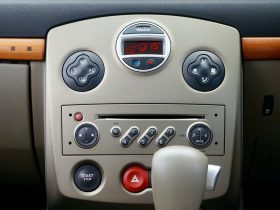Need car parts but also got to find a balance in quality and pricing? You’re likely weighing OEM vs aftermarket. Here are the pros and cons to help you decide.
More than 50% of cars less than two years old get serviced through OEM networks. This percentage shrinks as vehicles get older. Why does this happen? When it comes to OEM vs. aftermarket, car owners consider the part, its purpose, and their budget when making a choice. Newer cars are worth the extra investment, while older vehicles aren’t. If you’re not sure of the difference, use this guide to help you figure out which parts are right for your car.
What Are OEM Parts?
OEM stands for Original Equipment Manufacturer. Vehicle manufacturers use them in production. You can get them directly from the dealership or an authorized supplier. These are a direct replacement of the original parts that came on your vehicle when it rolled off of the assembly line.
Pros
There’s less comparison as there’s typically one option. There’s no assessing different brands and their varying prices and quality. The manufacturer stands behind its quality and performance. You can expect the replacement part to act exactly like the original part. Most OEM parts also come with warranty coverage. If you have the OEM part installed at a dealership, you’ll get both parts and labor warranties.
Cons
The biggest deterrent to buying OEM parts is that they’re more expensive. This is partly because the only place OEM parts are readily available is from a dealership. The dealership increases the cost to supplement its bottom line. Just because you pay more for the OEM part doesn’t mean you’re getting the best quality. Sometimes the aftermarket part performs better than the OEM one.
What Makes a Part Aftermarket?
Any part that’s not sold from the original vehicle manufacturer is an aftermarket part. Some parts are an exact match and direct replacement to the OEM part. These may not void your vehicle’s warranty. Other parts are meant to improve upon your original part’s performance. For example, performance brake rotors can improve the handling and stopping power of your car’s brakes.
Pros
Depending on the parts you’re buying, the aftermarket option is usually less expensive than the OEM. However, if a price sounds too good to be true, you should question it. You want to balance savings with quality. Some brands offer aftermarket parts that far surpass the OEM part in durability and performance.
This is because the vehicle manufacturer needs to balance performance with budget. If they used all top of the line parts, the car’s total cost would be more than what buyers are willing to pay. You have many more options when shopping for aftermarket parts. This bigger selection gives you more freedom in finding the right part for your performance needs and budget.
Cons
The biggest problem with aftermarket parts is that the quality can vary greatly. It’s a buyer beware market, and you need to educate yourself on what you’re buying before you hand over money. Not all aftermarket parts manufacturers are reputable, so ensure you only buy from trustworthy sources.
Whether you choose OEM or aftermarket depends on your budget and your needs. The OEM vs. aftermarket is all about personal preference. Consider buying OEM parts if you’re looking to fix your car. Aftermarket parts are a smart choice when you want to improve your car’s performance.







